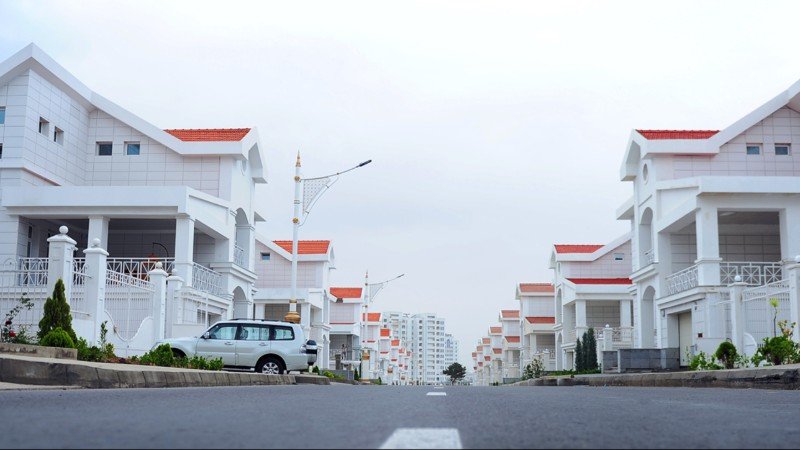The Standard Method of Measurement of Building Works for Eastern Africa
Discover the history, structure, and benefits of the Standard Method of Measurement (SMM) for Eastern Africa and why it matters in construction cost management.

The Standard Method of Measurement (SMM) is one of the most important tools in construction cost management, providing a clear framework for measuring, describing, and pricing building works. For over a century, it has shaped how Bills of Quantities (BoQs) are prepared, tendered, and evaluated in the UK, Kenya, and across Eastern Africa.
This article explores the history, benefits, structure, and relevance of the SMM in Eastern Africa, highlighting why it remains a cornerstone of quantity surveying and construction practice.
1. Background: The Origins of the SMM
The year was 1922. After years of fragmented practices in construction measurement, the Royal Institution of Chartered Surveyors (RICS) and the National Federation of Building Trades Employers of the UK released the first edition of the Standard Method of Measurement of Building Works (SMM).
Its purpose was simple yet transformative:
- To bring consistency, fairness, and clarity to construction measurement.
- To eliminate the confusion caused by varied practices and surveyor-specific methods.
- To establish a scientific and accurate basis for tendering.
The inaugural edition was organized into trade sections (e.g., Masonry) and used imperial units such as feet and inches. Further editions followed in 1927, 1935, and 1948, each refining the rules.
A major turning point came with the 1963 edition, which:
- Incorporated supplements (Prestressed Concrete, Structural Steelwork, Terrazzo Work, Heating & Ventilating).
- Added new sections (Demolitions, Alterations, Piling, Underpinning, Fencing).
- Shifted from trade titles to work titles (Excavation and Earthwork, Concrete Work, Brickwork and Blockwork).
- Introduced units of billing at the start of each section.
- Improved referencing with lettered sections and numbered clauses.
By 1968, the UK SMM made a historic leap by adopting metric units, replacing the imperial system, and aligning with international standards.
2. Local Adoption: The SMM in Kenya
In February 1968, just four years after independence, Kenya released its first edition of the Standard Method of Measurement of Building Works. This edition, inspired by the UK’s 1963 SMM, retained imperial units.
However, global shifts towards metrication quickly caught up. In October 1970, Kenya published a Metric edition of the SMM, reflecting both international practices and local input from professionals.
This 1970 edition remained in use for 38 years, despite rapid changes in the construction industry.
3. The Second Edition (2008): A Regional Standard
By the 1990s, it was clear the 1970 edition no longer covered modern practices. In 1992, the Quantity Surveying Chapter of the Architectural Association of Kenya (AAK) began a review. The result was the Second Edition of the Standard Method of Measurement, officially launched on 1st July 2008.
This edition was sanctioned by the following key industry bodies:
- East Africa Institute of Architects (EAIA)
- Institute of Quantity Surveyors of Kenya (IQSK)
- Board of Registration of Architects and Quantity Surveyors (BORAQS)
- Joint Building Council of Kenya (JBC)
- Africa Association of Quantity Surveyors (AAQS)
- Tanzania Institute of Quantity Surveyors (TIQS)
- Uganda Institute of Quantity Surveyors (UIQS)
For the first time, the SMM was positioned as a regional standard, intended for adoption across Kenya, Uganda, Tanzania, and the wider Eastern Africa region.
Key Innovations in the 2008 Edition
- Expansion beyond building works into civil works.
- Four new sections introduced:
- External Drainage
- Water Reticulation
- Landscaping
- Road Works
Its full name reflects this broader scope:
“The Standard Method of Measurement of Building Works and Associated Civil Works for Eastern Africa.”
4. Definition: What is the SMM?
The Standard Method of Measurement (SMM) is a codified set of rules that defines how construction work should be described, measured, and presented in Bills of Quantities.
It provides a common language of measurement, ensuring:
- Quantity surveyors, contractors, architects, and engineers interpret BoQs the same way.
- Ambiguity is eliminated in tendering and cost control.
- A fair, transparent basis for project management.
In short: the SMM standardizes construction measurement for fairness, accuracy, and efficiency.
5. Advantages of the SMM for Eastern Africa
Adopting the SMM offers multiple benefits for the region’s construction industry:
- Uniformity & Standardization – Ensures BoQs are consistent and comparable.
- Transparency – Reduces disputes with clear rules of measurement.
- Efficiency – Saves professionals time with a structured approach.
- Fair Tendering – Levels the playing field by enforcing a common pricing basis.
- Regional Integration – Harmonizes practices across Kenya, Uganda, Tanzania, Rwanda, and beyond.
- Professional Development – Provides a benchmark for training quantity surveyors and construction professionals.
6. Structure of the East Africa SMM
The East African SMM is logically structured to guide cost professionals through measurement:
- General Rules – Units of measurement, classifications, and description standards.
- Preliminaries – General project-wide costs (mobilization, temporary works, compliance).
- Work Sections – Covering the full scope of building and civil works, including:
- Demolitions and Alterations
- Excavation and Earthwork
- Piling
- Concrete Work
- Walling
- Underpinning
- Asphalt Work
- Roofing
- Carpentry
- Joinery
- Structural Steelwork
- Metal Work
- Plumbing and Engineering Installations
- Mechanical Engineering Installations
- Electrical Installation
- Floor, Wall and Ceiling Finishings
- Glazing
- Painting and Decorating
- Drainage
- Landscaping
- Roadworks
- Fencing
This logical and comprehensive structure ensures that every aspect of construction is measurable and comparable across projects.
7. Conclusion: Why the SMM Still Matters
The Standard Method of Measurement of Building Works and Associated Civil Works for Eastern Africa is more than a technical manual – it is the backbone of professional practice in quantity surveying and construction cost management.
By offering a uniform framework, it promotes clarity, fairness, and efficiency across projects in the region.
As the industry evolves, updates remain necessary. Ongoing efforts by the Institute of Quantity Surveyors of Kenya (IQSK), which I have had the privilege of participating in, aim to modernize the SMM to reflect new technologies, sustainability practices, and digital construction tools.
For professionals, mastering the SMM is essential to deliver accurate cost information, competitive tenders, and successful building projects.
Stay updated on SMM revisions, construction cost data, and quantity surveying insights - subscribe to our newsroom using the form below.
References
- Standard Method of Measurement of Building Works (Fifth Edition, Metric, 1968), RICS & National Federation of Building Trades Employers
- Standard Method of Measurement of Building Works and Associated Civil Works for Eastern Africa (Second Edition, 2008), Architectural Association of Kenya, QS Chapter
- Ivor H. Seeley (1969), Building Quantities Explained (S.I. Edition), Macmillan & Co. Ltd
- Ross D. Buchan, F.W. Eric Fleming & Fiona E. K. Grant (2003), Estimating for Builders and Surveyors (Second Edition), Elsevier
Stay Updated
Subscribe to our newsletter to get the latest articles and insights delivered to your inbox.
Tags
Related Articles

Part 2: Construction Feasibility Studies
This article outlines the major parts of a construction feasibility study....

Part 1: Construction Feasibility Studies
A feasibility study is an analysis that takes all of a project's relevant factors into account. There are several advantages to having one done. This article outlines some of them....

Productive Office Spaces
The design of an office space affects the productivity of its occupants. In this article, we explore factors that should be considered when designing an office space so as to enhance productivity....
